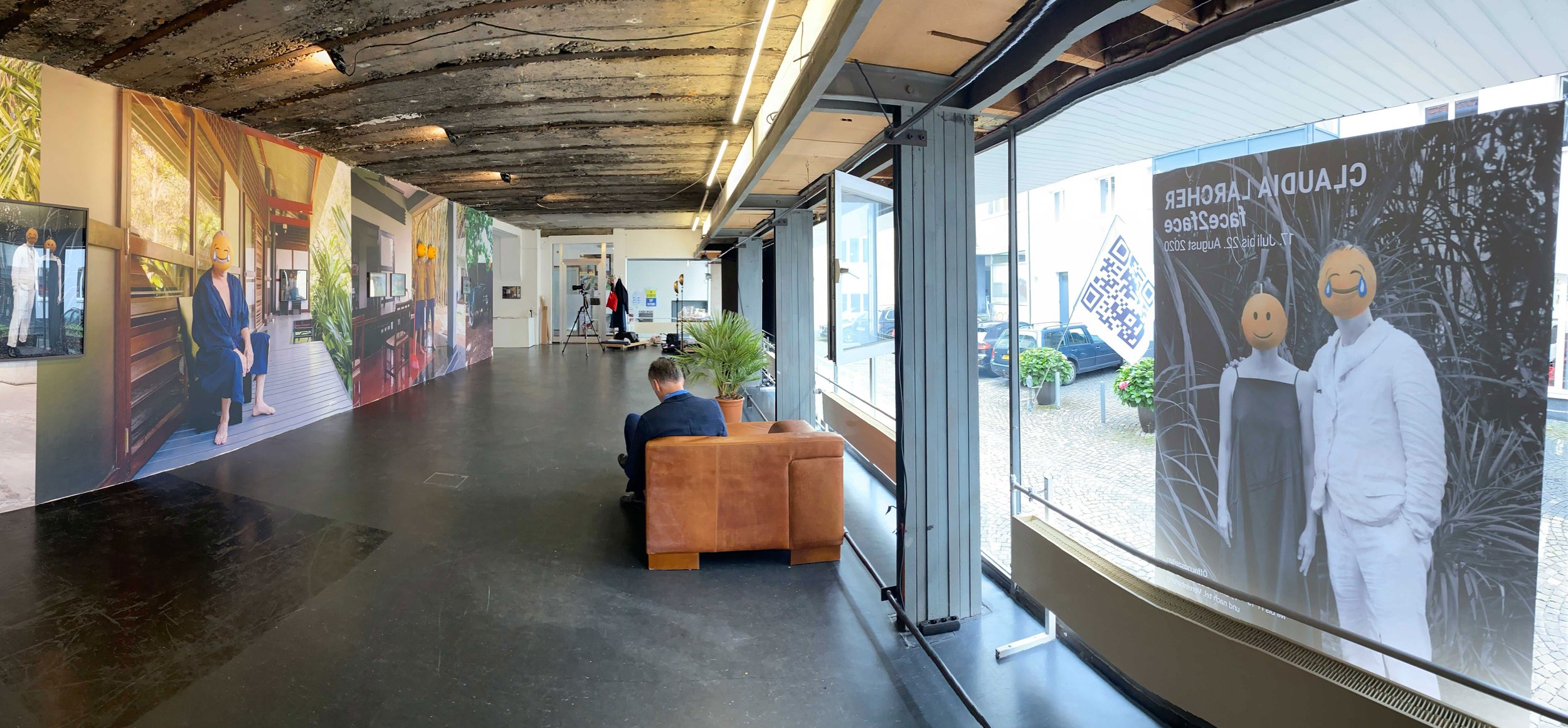Larcher had the eight emoticons carved as masks in the traditional way, linking signs and rituals that - actually - could not be more different. And yet there is a common link: the reference to the mask as a symbol for the loss of the (natural) face.Hans Belting noted in his book Faces. A History of the Face, Hans Belting noted in his book Faces. A History of the Face an endless consumption of "faces" in today's media society, "which it produces itself". Media faces have displaced the natural face in the public sphere, the audience is served with "facial clichés" that have become detached from the bond with the living body, Belting said. Faces, bodies today hold certain roles, are in themselves masklike. In Larcher's video, which emerged from the face2face project, employees of the one world foundation motionlessly wear the carved emoji masks. They are somewhat reminiscent of August Sander's 20th Century People, photographic portraits of people from the 1920s that foreground their respective professional roles and social status. But their faces, their identities are involved in a double game: they are erased by the mask, the emoji face completely removed from cultural or social context has taken their place.
Historicity, such as Sri Lanka's colonial history, also seems to have been made invisible in equal measure. And yet their carved masks represent testimonies. They are tangible, analogue tools to banish the evil spirits of the digital world.
text by Ines Gebetsroither
face 2 face
17.7. - 22.08.2020, Galerie Lisi Hämmerle, Bregenz / At
Emojis thus seem to be quite practicable in communication, especially in a time of rapid global exchange, in which barriers such as language and text are to be avoided as far as possible, if only for reasons of efficiency. The downside: the little faces replace our actual countenances. They are markers of what we really think and feel.
This is where Claudia Larcher's new project face2face comes in. It is based on a selection of eight popular emoji variants that we all use in chats: A teary-eyed one, a touched one, an annoyed-thoughtful one, a smiling one, a neutral-looking one, a happy-cheeky one, an unhappy one and one in love. Claudia Larcher had these digital pictograms translated into analogue by Sinhalese mask carvers in November 2019 as part of an artist-in-residence programme in cooperation with the one world foundation in Sri Lanka. The town of Ambalangoda on the western south coast of Sri Lanka is famous for its traditional mask carving art. The masks produced there were originally used by the population in dance rituals to drive away evil demons, but today they serve more of a tourist purpose.








